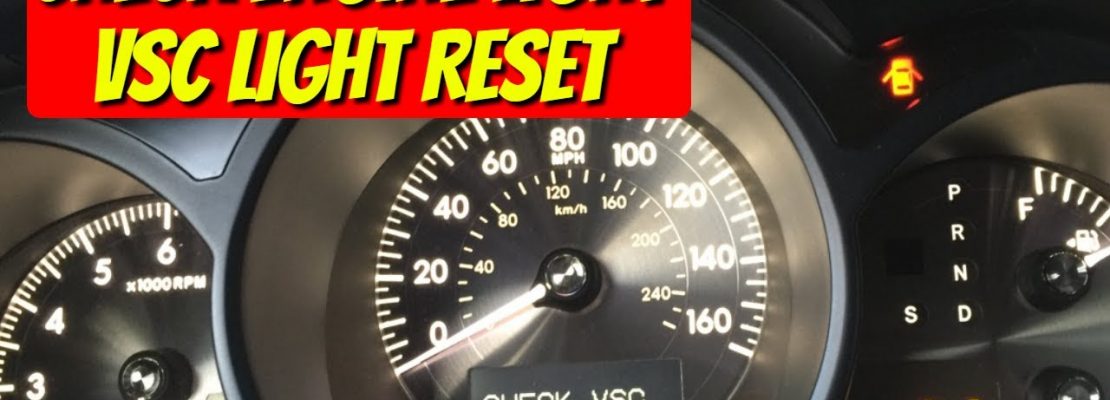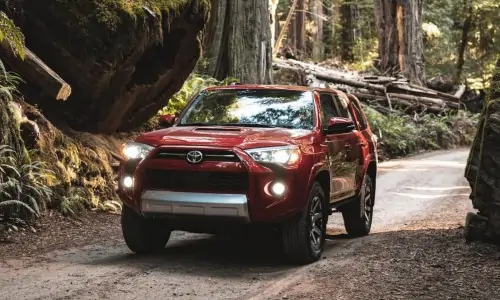We often feel our heart skip a beat whenever strange lights appear on our vehicle’s instrument panel. The Check Engine light may sometimes turn on, or the Vehicle Stability Control turns off and suddenly cuts off the power to your wheels. This is when you start asking yourself if it’s still safe to drive. Otherwise, you think of bringing it to a professional which can be an expensive trip. As such, we’re here to answer your questions regarding VSC and the Check Engine lights on your Toyota or Lexus vehicle.
VSC Off on your Toyota / Lexus Vehicle
To start with, VSC, or Vehicle Stability Control, is the official stability control system used by Toyota and Lexus in their vehicles. This system, along with TRAC, or Traction Control, helps prevent the drive wheels from spinning out of control, especially when driving on slick surfaces. Your car’s VSC automatically applies brake pressure on up to 3 wheels to keep your car aligned where your wheels are pointed. VSC is an essential safety feature that has been put in place since 2012. This means VSC turned off means the stability control on your vehicle is deactivated.
How do you fix VSC Off on your Toyota/Lexus?
For an easy fix on your VSC, there’s a button either by your shifter or your steering wheel with the same icon as the light appearing in your instrument panel for Toyota vehicles. Make sure your car is completely idle and put it in Park, if possible. Simply press and hold the VSC button for a few seconds and wait for the TRAC OFF and VSC OFF indicator lights to come on. This means both systems are deactivated. Afterward, press the VSC button again to re-engage the systems. If the VSC OFF light is still active, then there may be a bug or malfunction in your vehicle’s system. Taking it to your local Toyota Service Center may be required.
If you own a Lexus meanwhile, the steps required to fix any VSC issues are the same. While you may occasionally hear noises caused by VSC or TRAC systems, these sounds do not always indicate a malfunction. However, if the noises worsen or are persistent, then it’s best to get your vehicle checked out by a professional as soon as possible.
When should you turn OFF VSC?
If you’re stuck in dirt, mud, or snow, it’s usually recommended to turn VSC as well as TRAC off to reduce the power from the engine to the wheels. Once you’re on stable ground, turn the VSC/TRAC on again to engage the system back on.
Check Engine Lights ON for Toyota / Lexus Vehicles
An active Check Engine light on your car’s dashboard can be alarming especially if you’ve never seen it before. There is a wide range of issues that can cause your check engine light to come on, such as a loose gas cap, faulty spark plugs, oxygen sensors, or mass air flow sensors, to name a few. No matter the exact cause of the Check Engine Light turning on, it’s highly recommended to bring your vehicle to an authorized Toyota or Lexus certified technician to isolate the root problem and repair the vehicle as needed.
What are the common causes for the Check Engine Light to turn on?
The most common cause of your Check Engine Light turning on is a missing, broken, or loose gas cap. The gas cap prevents gas fumes from being released when driving and helps maintain the pressure on your car’s fuel tank. They’re essential to optimizing fuel economy as well as decreasing harmful emissions. Gas caps aren’t expensive so if this is the primary cause for the light to turn on, then you’re in for a very easy fix.
Another cause can be exposed or dirty Mass Air Flow Sensor causing your engine to misfire, causing poor performance, poor fuel economy, or other potential damage to your engine. Having the Check Engine Light suddenly turning on can also be due to faulty spark plugs. You’ll eventually need new spark plugs over time or spark plug wires especially when your vehicles are a few years old.
What are the things to do when your Toyota or Lexus Check Engine Light comes on?
When you’re driving and all of a sudden the Check Engine Light comes on, it’s best to immediately identify any changes in the performance of your vehicle as you’re driving. Try to go slowly until you can bring your car in for service. This is because your car’s onboard diagnostic system has determined something is wrong with your vehicle and needs to be fixed. Although your car seems to be working fine even if the Check Engine Light is on, preventing additional issues is a must if you want to maintain your car’s overall performance.





